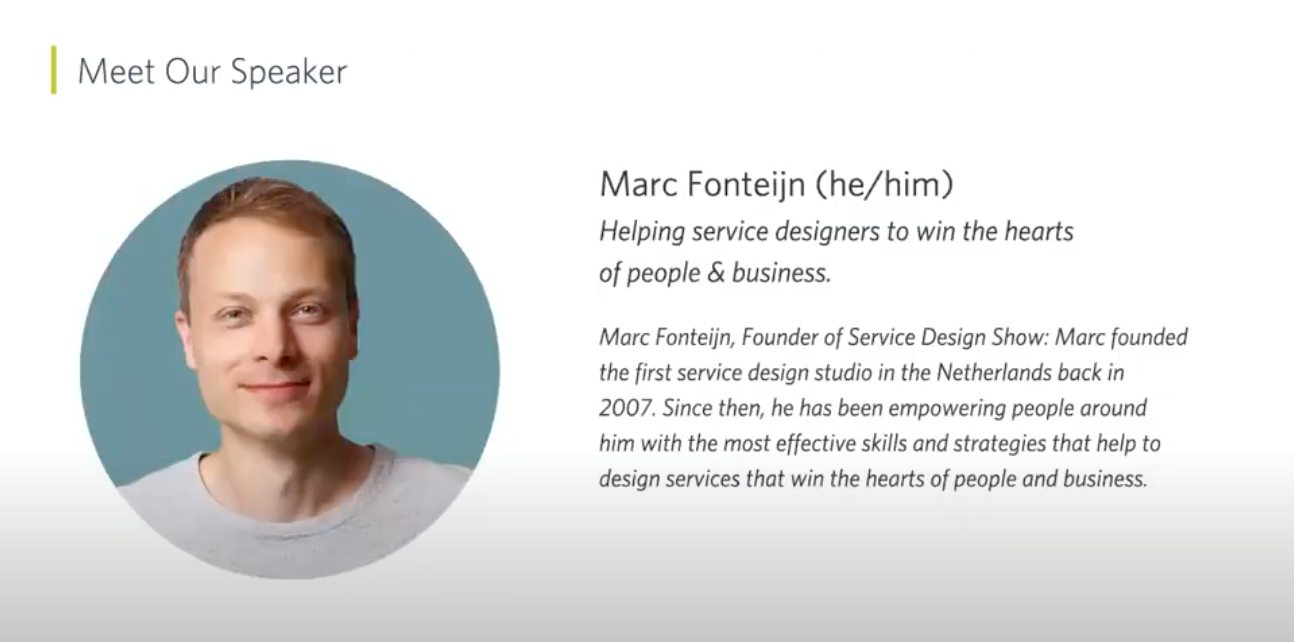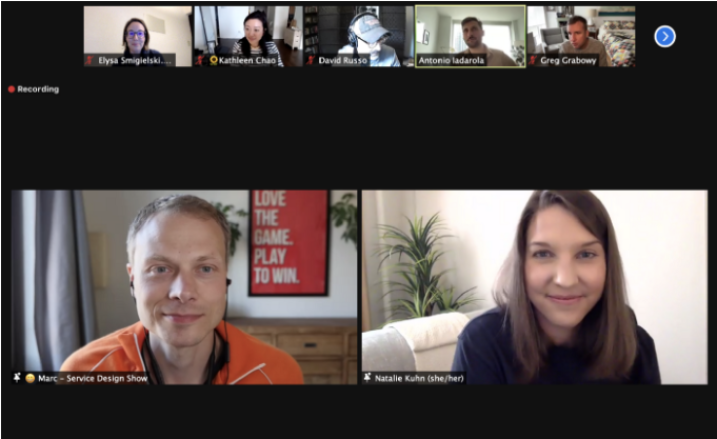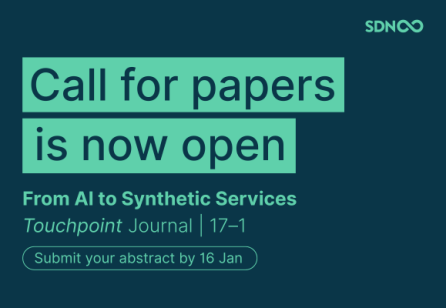The Service Design Network New York Chapter hosted Marc Fonteijn last Tuesday, April 27th for a virtual fireside chat entitled “Explaining the Business Value of Service Design in Plain English”. The conversation focused on pitching service design to clients, or simply others whom it would could help, and thinking through metrics, but also weaved in discussion about data types and service design education.
Marc has been practicing service design since 2007, when he started the first service design studio in the Netherlands. He is also founder and host of the Service Design Show, a resource hub of videos, articles, and courses in service design–checkout the YouTube channel!

Host and co-founder of the SDN New York Chapter Natalie Kuhn facilitated the conversation with Marc. She posed questions from both a pre-set list of general questions and live from the Zoom chat. The summary below is recap of the major topics and themes that grew from the conversation, but do check out the recording here for the full experience of questions and answers!
Making the Business Case for Service Design
In the overall conversation, making a case for service design seemed to fall into three categories: pitching service design, defining service design, and when to actually use service design.
Pitching Service Design
Clients are not really interested in service design, per se — they are interested in solving a problem. So instead of trying to define or pitch service design to a client, designers should focus on understanding the situations and problems that the client cares about and pitching solutions to those problems (even though those solutions may well be using service design methods!). Marc reminded us that designers often forget to apply to the client the same human-centered thinking that they apply to end-users. The client has needs, desires, and pains too, and service designers should tune into them just as much as into the end user.
Ultimately, Marc said, most organizations are already using service design — organizations today have moved beyond being product-only based. But, many of them simply do not acknowledge or know that. One attendee, Greg Grabowy, noted in the Zoom chat that this gives designers the opportunity to do follow a “Miyagi method”. Meaning the designer can guide someone through the motions of service design, without mentioning service design, and eventually they will see that they have been doing karate (service design) the whole time!
Another tactic for pitching service design is bringing up examples of bad services. In doing this, Marc notes, the designer can gauge if there is interest from the client in discussing the reasons that the example service is bad, and even in investigating the pain points of their own service.
Defining Service Design
If you find yourself in need of defining service design in plain english, Marc mentioned three go-tos:
- The Coffee Shop Example: “There are two coffee shops right next to each other, selling the exact same coffee for the exact same price. Service design is what makes people walk through your door, come back often, and invite their friends”. Video by FJORD here.
- Using a similar field, like UX, as a basis for comparison.
- Metaphors. Marc even has an episode called 7 Powerful Metaphors That Explain Service Design with Robert Bau.
Deciding If and When to Use Service Design
In assessing whether or not to use a service design approach for a client, designers should examine whether the client’s problem is related to:
- Understanding customers?
- Understanding a holistic experience?
- Creating engagement within the organization?
Designers should be aware of situations where service design is not relevant to the problem at hand. It is up to the designer to be authentic in setting boundaries with the client.
Marc asserted that service design fits well within organizations that already take seriously:
- Customer experience.
- Business as a theatre (versus as a factory). When an organization treats business as a theater, it and its employees understand how every person in the organization impacts the customer.
- Employee experience.









Share your thoughts
0 RepliesPlease login to comment